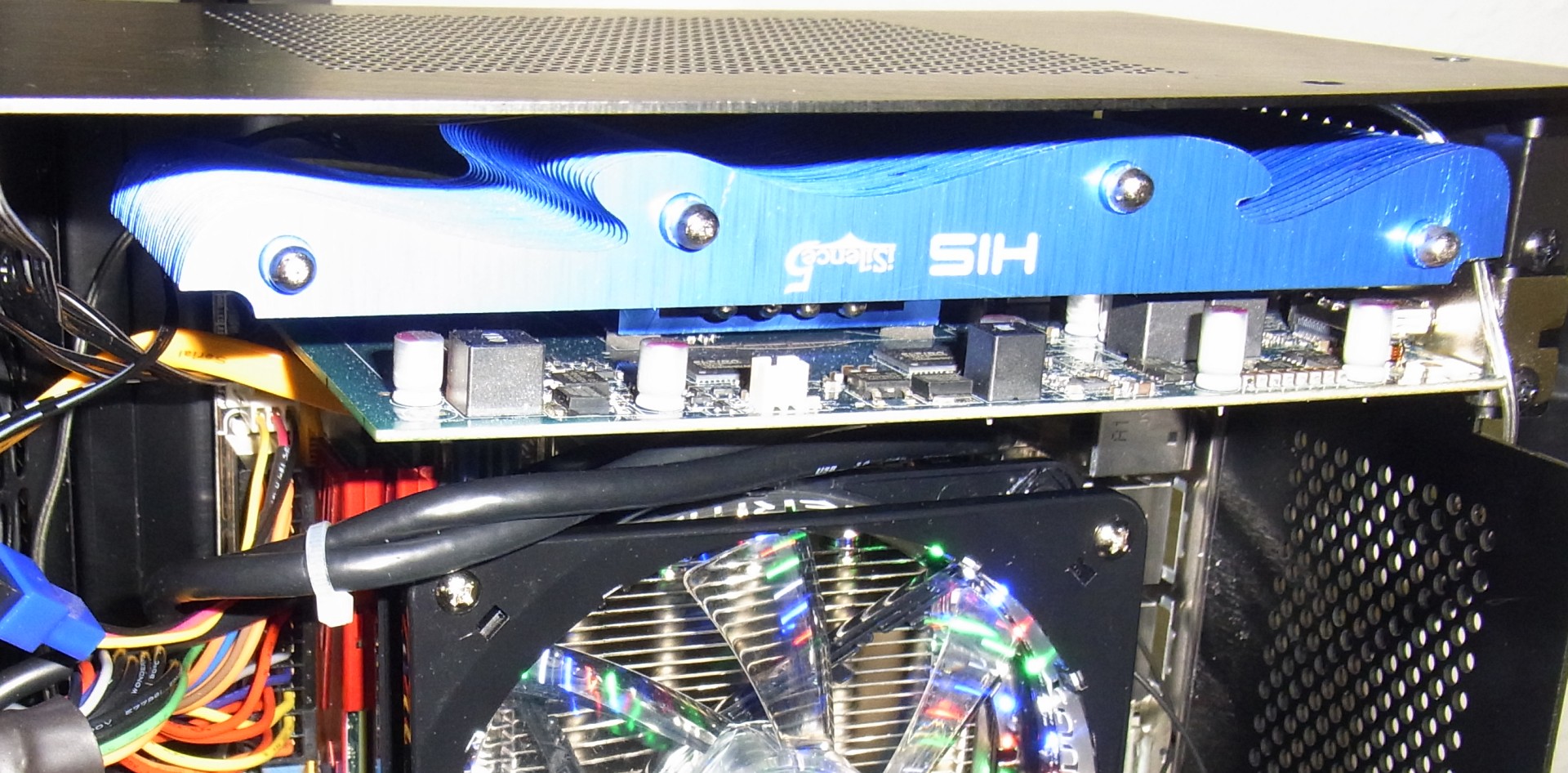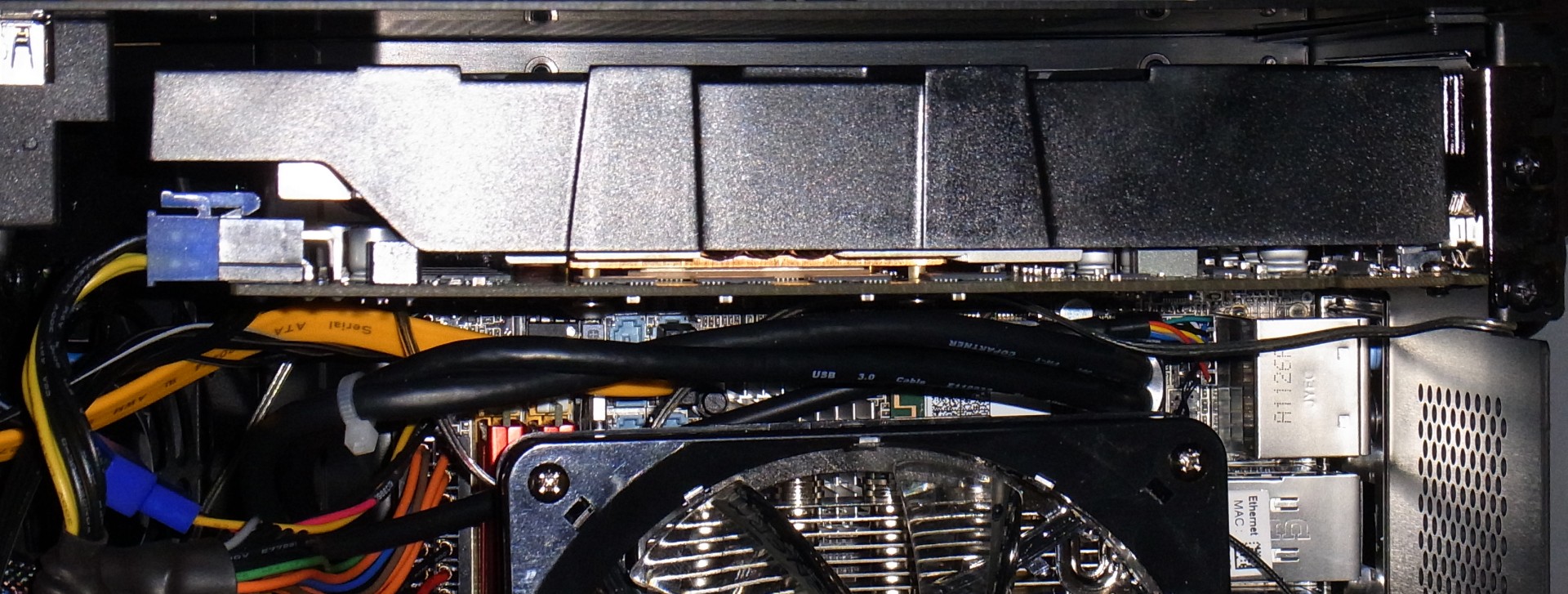Lian Li PC-Q30 Case Review: A Mini-ITX Chassis With Flair
Lian Li's PC-Q30 is not just a PC case, but an enclosure that serves as a showcase for the living room, including a unique shape and a large front window to show off the technology you cram inside. It’s sure to raise eyebrows and start some conversations.
Performance With And Without Discrete Graphics
APU vs. CPU with Discrete Graphics
The PC-Q30’s dimensions do limit your choices when it comes to discrete graphics. Dual-slot cards fit without a problem. But a length of 24 cm with a power connector on the back of the card, or a height of 13 cm (more like 12.5 cm, really) with the power connector on top, are already pushing it. Our power supply of choice has a six-pin PCIe power cable and connector, but shorter cards like Asus' GTX 670/760 DirectCU II Mini require eight-pin input, in which case you’re out of luck.
Then again, an AMD Radeon HD 7850 or 7750 should suffice in light of the system’s intended location and purpose. The latter can even be passively cooled. Of course, a board like HIS' HD 7850 IceQ X² is still really quiet; you probably won't notice it above the noise from other components.
This is a good time to revisit the APU versus CPU discussion. The A10-6800K's on-die graphics engine offers fairly similar performance as a Radeon HD 6670. This is enough to play Crysis 3 at the Low detail preset at up to 1680x1050 with reasonable frame rates. Less demanding games run at 1920x1080 at higher performance, depending on the title and graphics settings. AMD's A10-6800K is certainly not good enough for serious gaming, but it’s ample for entry-level or mainstream 3D.
Combining a passively-cooled Radeon HD 7750 and Intel's CPU doesn’t really provide much more performance than the AMD APU. This is because graphics is the bottleneck. Differences only become apparent in CPU-intensive games like StarCraft II with some of its more challenging maps or Battlefield 4 in multiplayer, and they’re more pronounced when a Radeon HD 7850 is used instead. The APU’s less powerful processing cores lose out to the combination of reasonably powerful add-in graphics and Intel's Core i5-2500K to the tune of five to 10 percent. Of course, while this is easily quantifiable, it's typically not enough to render a title playable or not.
Bottom Line: APU vs. CPU and Discrete Graphics
The A10-6800K APU is powerful enough for HTPC applications and light gaming. If, however, a stylish gaming system is the goal, then a more powerful combination of an Intel processor and a discrete graphics card is the way to go. Both solutions are equally doable in this enclosure.
Get Tom's Hardware's best news and in-depth reviews, straight to your inbox.
If you thought to yourself, "How about adding a Radeon HD 6670 in Dual Graphics mode?" then we have some bad news. On paper, that'll give you between 15 to 30 percent more performance, but it'll also add about 50 W to your system's power consumption. Moreover, the boost might not even be palpable. Check out AMD Dual Graphics Analysis: Better Benchmarks; Same Experience? for our own investigation.
Current page: Performance With And Without Discrete Graphics
Prev Page Fans, Temperatures, And Noise Next Page Lian Li's PC-Q30 Is Small, Special, And Stylish (But Also Practical)
Igor Wallossek wrote a wide variety of hardware articles for Tom's Hardware, with a strong focus on technical analysis and in-depth reviews. His contributions have spanned a broad spectrum of PC components, including GPUs, CPUs, workstations, and PC builds. His insightful articles provide readers with detailed knowledge to make informed decisions in the ever-evolving tech landscape
-
gofasterstripes Lian Li proving, again, that they're a little less sane than everyone else...Reply
I kinda like it, nice concept. There's too many boring PC cases! -
jimthenagual Doesn't quite do it for me. Good for them for trying something new, but it's not something I'd buy.Reply -
vertexx Does that thing dispense Bitcoins? It looks like it should be dispensing something....Reply

